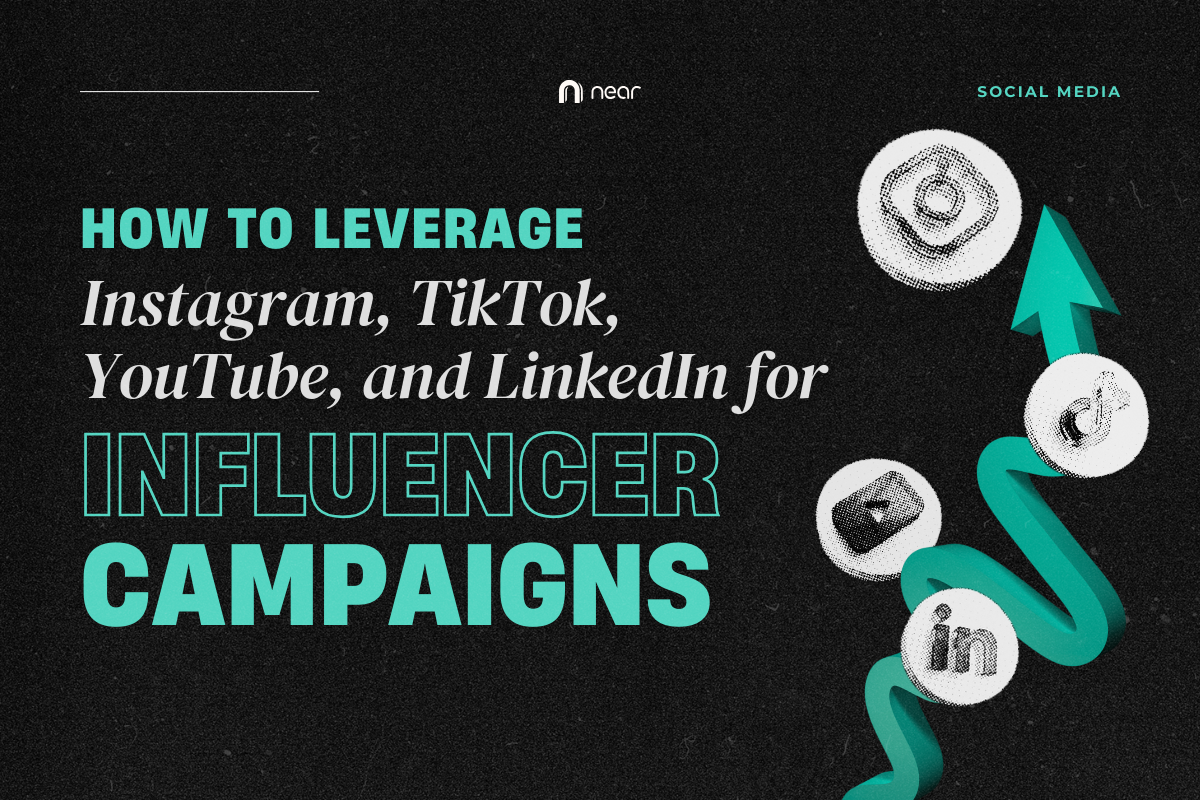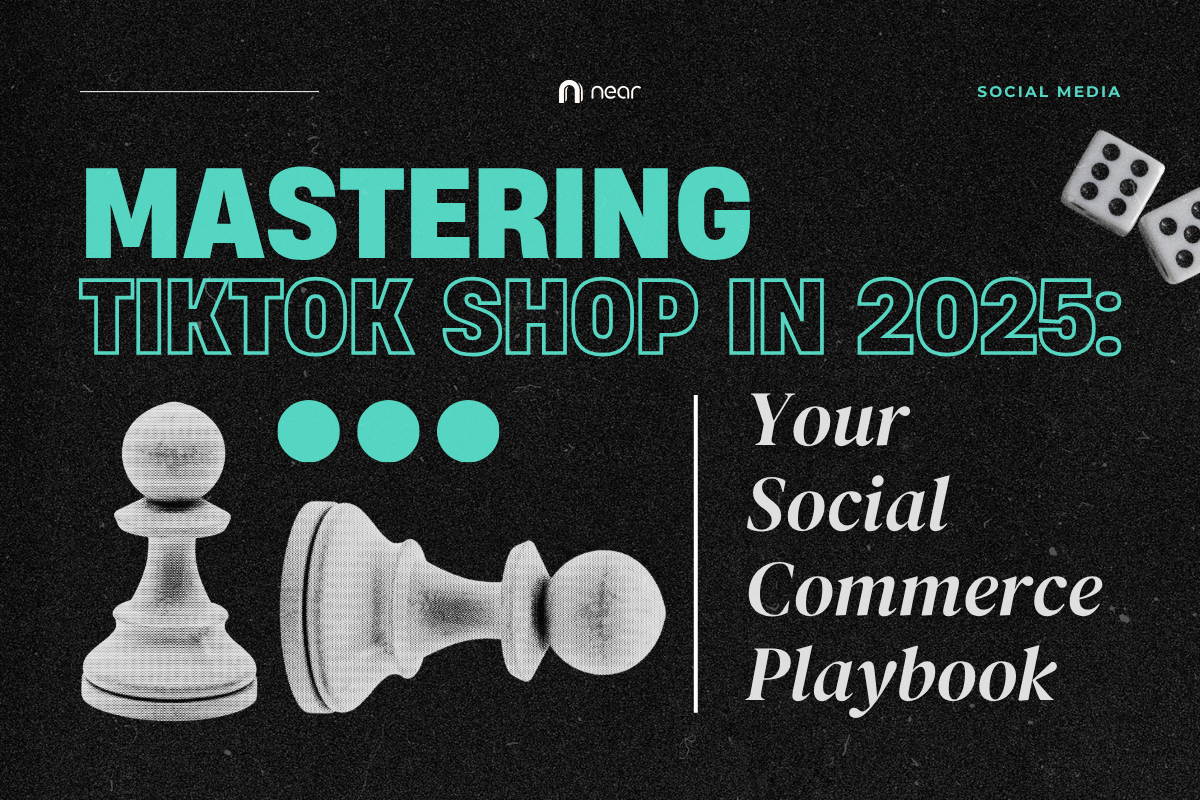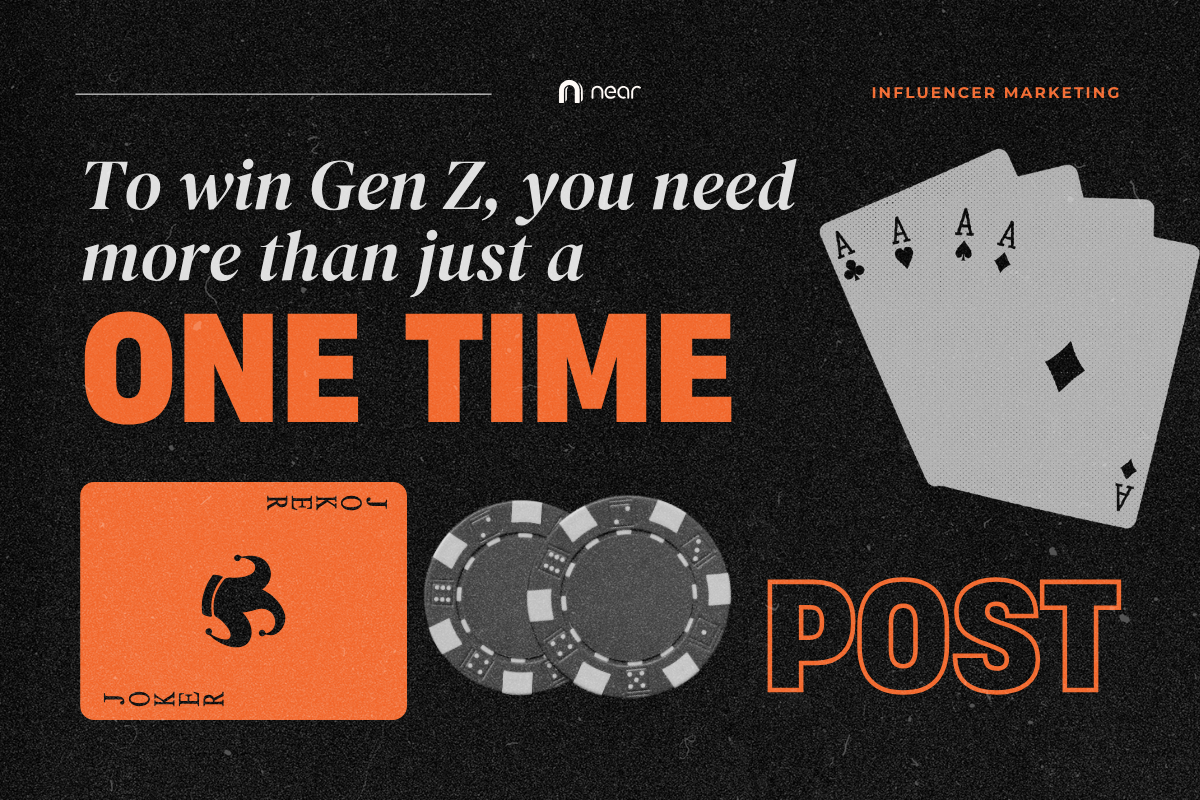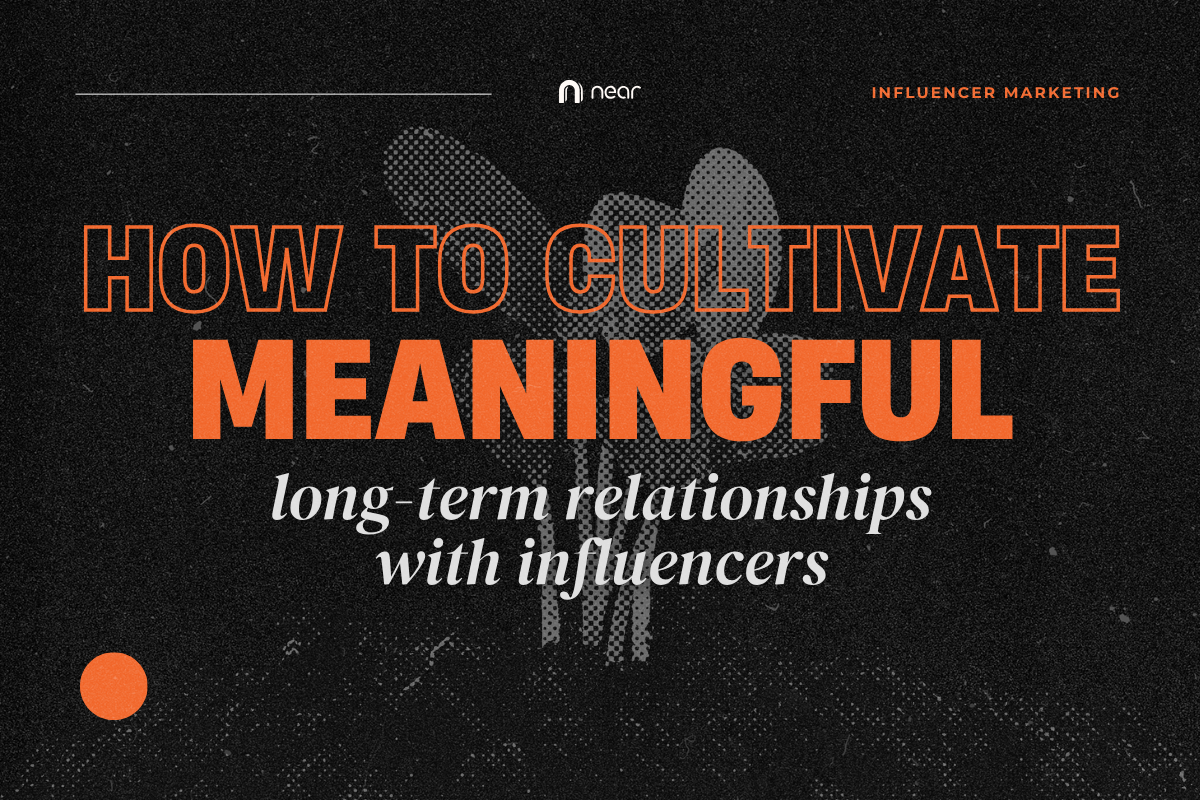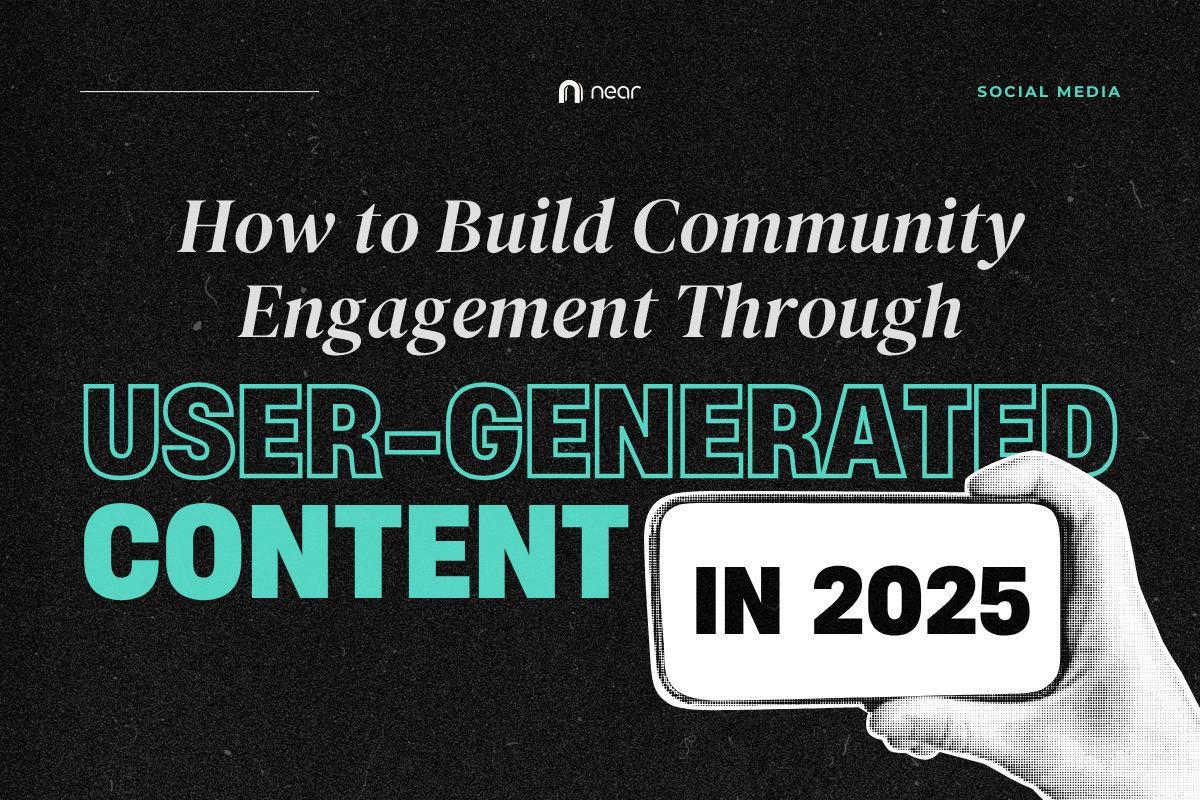View By Date
- December 2025 1
- November 2025 2
- October 2025 3
- September 2025 2
- August 2025 2
- July 2025 2
- June 2025 2
- May 2025 3
- April 2025 2
- March 2025 3
- February 2025 1
- January 2025 1
- November 2024 1
- September 2024 1
- July 2024 1
- May 2024 3
- April 2024 1
- March 2024 1
- February 2024 2
- January 2024 2
- August 2023 1
- July 2023 1
- June 2023 2
- May 2023 3
- April 2023 4
- January 2023 2
- November 2022 1
- September 2022 3
- June 2022 1
- December 2021 1
- November 2021 4
- October 2021 2
- September 2021 1
- January 2021 1
View By Category
How to Leverage Instagram, TikTok, YouTube, and LinkedIn for Influencer Campaigns
How to Leverage Instagram, TikTok, YouTube, and LinkedIn for Influencer Campaigns
When it comes to influencer marketing, one size doesn’t fit all, especially when you’re working across Instagram, TikTok, YouTube, and LinkedIn. Each platform has its own vibe, audience behaviour, and content format. For brand marketers, this means the key to campaign success isn’t just picking the right influencer, it’s knowing where they shine and how to play the game on that specific platform.
As we’ve seen in our Spotify case study, creators who are tapped for the right platform and right content format drive more authentic conversations and better ROI. That’s why, at Near, we always build with platform fluency in mind so KOLs aren’t just producing content; they’re showing up where and how it matters most.
Whether you're growing your brand’s social presence or executing your next influencer campaign, here’s your guide to maximizing every social media platform in 2025.
Instagram: Visual Storytelling That Converts
Best for: Lifestyle, beauty, fashion, and product-forward contentTop formats: Reels, Stories with swipe-ups, Grid posts, Carousels, Link-in-BioKey metrics: Engagement rate, Story completion rate, Saves, Clicks
Instagram remains a powerhouse for brand-building especially when paired with micro-influencers. Its algorithm rewards high-quality, aesthetic content, but the secret sauce in 2025 is storytelling through reels and tap-through stories. You must partner with influencers to seed UGC through niche hashtags and stories, then reshare these across your owned pages for social proof. More so, prioritize micro-influencers with strong saves and replies not just likes. These signal intent and deeper audience engagement. For more on how to find the right IG partners, read our blog on How to Choose the Right Micro-Influencers
TikTok: Short, Sharp, and Viral
Best for: Gen Z, brand awareness, product discovery, low-barrier viralityTop formats: Short-form video, TikTok Shop Lives, Sounds + Trends, Stitch/Duet contentKey metrics: Watch-through rate, Shares, Saves, CTR from product links
TikTok is now a destination for community-led discovery. Whether it's dance challenges or deep dives into skincare routines, TikTok thrives on relatable, lo-fi content. But it’s not about being everywhere, it’s about embedding yourself in culture. For this platform, tap influencers for TikTok Shop Lives or creator-led challenges tied to trending sounds. For better traction, don’t over-script. Let influencers speak in their natural voice because this is where authenticity truly performs.
YouTube: Depth, Trust, and Searchability
Best for: Tech, skincare, education, finance, tutorials, long-form storytellingTop formats: Product reviews, Hauls, Tutorials, Vlogs, YouTube ShortsKey metrics: Average view duration, Subscriber growth, Link clicks, Conversion rates
YouTube is where creators build deep trust. Audiences spend more time with content here, which means more time for your product to shine especially in how-to, comparison, or review content. For YouTube, partner with mid-tier influencers for product integrations in evergreen formats like “Top 5” videos or “Monthly Favorites.” For conversion, pair YouTube campaigns with custom tracking links or promo codes to monitor true ROI. As Grin’s YouTube guide points out, long-form content converts viewers into loyal buyers especially for high-consideration purchases.
LinkedIn: B2B Influence with a Human Face
Best for: Thought leadership, founder stories, work culture, employer brandingTop formats: Personal posts, Carousel content, LinkedIn Lives, Pulse articles
Key metrics: Impressions, Comments, Profile visits, Leads or sign-ups
Influencer marketing on LinkedIn is less about flashy promos and more about credibility. It’s especially effective in B2B and professional service industries, where trust and authenticity are everything. Partner with influencers or thought leaders who have niche influence in your category (think HR, marketing, finance). And then, don’t just track engagement: measure lead form conversions or sign-ups from posts to evaluate performance.
Key Takeaways for Multi-Platform Campaigns
Here’s your 3-step guide to make influencer platforms work harder for you:
Match platform to goal: Use Instagram for visuals and product drops, TikTok for buzz and rapid discovery, YouTube for in-depth reviews, and LinkedIn for credibility and leadership.
Think content-first, not just influencer-first: Customize content to fit each platform’s strengths instead of recycling posts across channels.
Track what matters: Don’t get blinded by the influencer’s follower count. Prioritize the ones with strong engagement, conversion potential, and aligned audience behavior. Focus on metrics like CTR, community interaction, and conversions because these are the insights that actually move your campaign forward.
Download Near’s Social Media Trends Guide here to stay ahead of the curve and make every platform work smarter for your next campaign.
Mastering TikTok Shop in 2025: Your Social Commerce Playbook
Mastering TikTok Shop in 2025: Your Social Commerce Playbook
Social commerce isn’t just a buzzword, you know? It’s the front door for brands in 2025. With TikTok Shop, the lines between content and checkout blur, turning every video into a shop window. But getting started? It’s a steep climb. From learning curve hurdles to algorithm unpredictability and content saturation, many brands feel stuck between creating content and converting it.
Here’s the good news: social commerce on TikTok is already a powerhouse. TikTok Shop reported a remarkable $33.2 billion in global GMV in 2024—nearly tripling year-over-year growth. This boom isn’t confined to one market; it stretches from Southeast Asia to North America. So whether your brand is big or just starting out, TikTok Shop is a channel you can’t afford to ignore.
Here’s your playbook to cut through the noise and build social commerce success on TikTok:
1. Find Your Niche, Not Just View Counts
TikTok’s algorithm rewards resonance over reach. Instead of chasing broad virality, aim for niche communities like #BeautyTok, #PetParents, or #FashionTok where buyers genuinely engage.
As Sprout Social explains, TikTok’s strength lies in its personalized discovery feed, which makes it easier for brands to connect with micro-niche audiences. Brands featured in this 2025 guide from Stack Influence recommend targeting hyper-specific storefronts: think themed video series, creator-led tutorials, and affiliate-style content with clear product tags. And in our TikTok Shop Guide 2024, we break down how niche storytelling combined with social proof can drive better conversions than paid media alone.
2. Make Every Post Shop-Worthy
TikTok Shop isn’t a separate storefront because it’s integrated into the FYP, meaning every scroll can become a sale. But that doesn’t happen with just passive product shots. Storytelling is the real conversion tool.
The formula:
Hook early: “Here’s why this changed my skin overnight...”
Show it in use: lifestyle, demo, or reaction
Tap to shop: use TikTok’s native product tagging or affiliate links
Live selling also made a comeback. Per FordeBaker, real-time livestreaming adds urgency, FOMO, and product education at scale. In our Gen Z growth blog, we shared how brands leaning into live formats saw better retention and higher cart values.
3. Test, Adapt, and Tap into Culture
The TikTok Shop landscape indeed moves fast. Algorithms shift. Audience tastes change. That’s why high-performing brands aren’t just posting, they’re testing.
Here’s some tips:
Run A/B tests between short-form, long-form, and live demos
Track key metrics: view-through, product clicks, add-to-cart
Repurpose winning formats with different creators
Beyond formats, cultural fit also matters. TikTok is now the front door to Gen Z beauty, fashion, and lifestyle brands. Align with their values: sustainability, humor, inclusivity, and create content that feels like a part of the feed, not an interruption. In our Gen Z marketing insights, we found that relevance to local humor and trends consistently outperforms overproduced ads.
Key Takeaway
So what’s the catch? TikTok Shop in 2025 isn’t about going viral: it’s about being intentional. The most effective brands are:
Going niche: by targeting specific communities and partnering with creators who genuinely connect with those audiences
Creating shop-worthy stories: that embed product discovery naturally into TikTok-native content formats
Testing and evolving: content while staying culturally relevant and engaging on-platform trends
Do those well, and TikTok Shop stops being overwhelming. It starts becoming a growth engine.
Want to make marketing campaigns that actually convert? Download Near’s Social Media Trends Guide here.
To Win Gen Z, You Need More Than Just A One-Time Post
If you’re still running one-off influencer campaigns hoping to win over Gen Z, it’s time to rethink your strategy. For real.
Gen Z consumers are some of the most marketing-savvy, socially aware audiences we’ve ever seen. They scroll fast, spot fakes faster, and won’t hesitate to click away if something feels even slightly off. According to a McKinsey report, 70% of Gen Z say they try to purchase from brands they consider ethical, and they’re quick to hold brands accountable for performative or inauthentic behavior. So what’s the problem with single-shot influencer posts? Simple: Gen Z doesn’t just want a pitch, they want proof.
According to Later’s Gen Z consumer insights, 49% of Gen Z relies on influencers to discover new products, and 58% follow them for entertainment. But those influencers aren’t just selling, they’re seen as virtual friends, trendsetters, and trusted voices. In a generation built on connection, a one-time ad just won’t cut it.
Let’s break down why these short-term campaigns are falling flat and what marketers can do instead.
Why One-Off Campaigns Aren’t Effective
Lack of Consistency = Lack of Trust
Gen Z can smell a transactional endorsement a mile away. If they see an influencer promoting a product just once and never again, it raises questions. They need to see consistent usage and long-term engagement before they consider buying in.
Inauthenticity Feels Loud
Forced collabs? Scripted lines? Gen Z will scroll past. They want storytelling, not sales pitches. Influencers who post candid, unfiltered content about their real experiences are far more likely to spark interest and trust.
It’s About Community, Not Clout
A huge following isn’t enough–Gen Z prefers creators who have meaningful engagement with their audience: ones who answer DMs, start conversations, and act like people, not billboards. That’s why micro and mid-tier influencers often perform better than macro ones in this space.
Culture > Product
Product-first posts feel out of place in a generation that values shared experiences. Gen Z connects with brands that embed themselves in their lifestyle, values, and humor—not ones that interrupt it.
Enter: The Age of “Deinfluencing”
The rise of deinfluencing proves that Gen Z is increasingly critical of overconsumption. They reward brands that promote sustainability, transparency, and responsibility, not hype.
What Smart Marketers Do Instead
1. Build Real Relationships with the Right Influencers
Winning brands don’t just collaborate, they commit. Long-term partnerships with creators who align with your values allow for more natural, recurring content that feels real, not rehearsed. It’s what Gymshark does by working with fitness influencers who genuinely use their products, and it’s how Spotify turned their Wrapped KOL campaign into a cultural moment.
Start by partnering with influencers who already reflect your audience’s values and lifestyle. Then stick around. Gen Z needs to see consistency before they buy in.
2. Prioritize Authenticity
Forget polish—focus on personality. Gen Z craves storytelling that feels spontaneous, not staged. Let influencers speak in their own voice, share real experiences, and even show imperfections. That’s where trust builds.
And if your brand aligns with Gen Z’s bigger interests (like mental health, sustainability, humor, or activism), don’t just nod to it—embed it into the content. This kind of cultural fluency is key to standing out.
3. Focus on Engagement, Not Just Exposure
It’s not about how many followers they have, it’s about how many care. Partner with KOLs who are talking with their audience, not just talking at them. Prioritize those who start conversations, share comments, or co-create content with followers.
Gen Z also responds well to campaigns that invite participation. Think TikTok challenges, comment-led prompts, even gamified or AR experiences. Interactive campaigns create shared experiences—something one-time posts rarely do.
Key Takeaway
Gen Z isn’t buying into one-time influencer posts—they’re looking for proof, patterns, and people they can believe in. Winning their loyalty takes time, intention, and a strategy that puts real connection first. That means fewer quick hits, and more long-term partnerships rooted in trust, culture, and creativity.
Want to learn more on how to make marketing campaigns that actually resonate with Gen Zs? Download Near’s Social Media Trends Guide here.
How to Cultivate Meaningful Long-Term Relationships with Influencers
Building long-term influencer relationships is one of the smartest moves a brand can make in 2025.
Because today, influencer marketing must be more than aesthetics or perfectly timed posts. It’s also about the relationships behind the content—the real, meaningful connections between brands and the creators who bring their stories to life.
KOLs (key opinion leaders) don’t just promote products. They shape conversations, shift culture, and define your brand. That’s why the best influencer strategies today focus on shared values and consistency. Whether you’re working with micro-influencers or household names, the key is to cultivate partnerships that grow over time and actually mean something.
Why Long Term Matters
We’ve all seen it: BTS and Louis Vuitton, Roger Federer and Uniqlo, Serena Williams and Nike. They show how long-term partnerships can shape brand identity, deepen audience connection, and unlock bigger, more creative collaborations over time.
According toTraackr, an influencer marketing software company, long-term partnerships deliver better ROI as influencers better understand your brand. Their content feels more genuine, more informed, and more trusted by their audience.
Yes, short-term influencer campaigns might bring short-term buzz. But lasting brand impact is usually a result of a lasting relationship.
When you partner with an influencer for a one-off collab, that’s totally normal! It happens all the time. But what happens after that post matters. That first project is the spark and you have to nurture the relationship. Why? Familiarity breeds trust and opens the door to better work. And if that first collab went well? That’s your green light to go bigger next time.
Here’s the thing. If you’ve worked with a KOL before, whether as a brand or an agency, you already have something money can’t buy: familiarity.
They know how you work.
You know how they communicate.
And that kind of trust? It speeds up production, reduces back-and-forth, and leads to better-performing content. Familiarity often translates into smoother workflows, more aligned content, and higher engagement because you’re not just briefing a stranger. You’re building with someone who already gets it.
It’s way easier to co-create something meaningful when both sides already get each other. No awkward intros or over-explaining. You both build on trust and content that clicks.
And what does this mean for your customers?
They see consistency, which builds trust.
They get to know your brand over time, not just in a one-off post.
Your product becomes tied to someone they already trust.
That familiarity leads to better brand recall, stronger emotional connection, and more confident buying decisions. Because when an influencer genuinely sticks around, the customer does too.
If your goal is loyalty and trust, long-term relationships are the foundation.
Make Influencers Want to Stay
Relationships go both ways. Think of it as dating—no one wants to feel used, rushed, or ghosted, right? Influencers are more likely to stay when they feel seen, supported, and creatively fulfilled.
Sustainable influencer partnerships rely on transparency, mutual respect, and trust. Creators aren’t just content machines, treat them like partners.
Here are a few ways to make that happen:
Alignment matters from the start. Start by choosing an influencer who naturally fits your brand. look at their tone, content style, values, and audience. If they’re already a user, even better! No hard selling needed, just real advocacy. When their voice and your values align, the content feels seamless and hits harder.
Collaborate, don’t dictate. Influencers thrive when they’re trusted to tell the story their way. Share clear guidelines, then let them translate your message in a voice their audience already connects with. It’s about guided direction, not control.
Show up outside the campaign cycle. Feedback, check-ins, and simple “thank yous” go a long way.
Recognize real value. Celebrate their wins, compensate them fairly, and loop them into bigger plans! It shows you value them beyond a post. At Near, we start with real conversations, not mass emails. Getting on calls and co-developing ideas with KOLs builds trust and loyalty.
And if you’re still searching for the right influencers, we’ve got tips for that, too! Check this out.
The Relationship Ripple Effect
Long-term influencer relationships don’t just drive better engagement. They create a ripple effect across your entire brand presence: boosting brand recall, increasing UGC volume, improving follower growth, and building long-term customer loyalty. When KOLs show up consistently for your brand, their audience remembers, trusts, and eventually acts.
When creators feel genuinely connected to your brand, they become advocates. They talk about your brand naturally, tell more real stories, and create content that drives higher engagement rates and stronger customer retention. It’s the kind of content that doesn’t just look good, it lands.
This kind of consistent content builds credibility and shapes your brand identity. As Forbes notes, long-term influencer partnerships can help define how audiences perceive your brand, not just during a campaign, but long after.
What Real Relationships Do for Brands
Long-term partnerships are about more than performance metrics. They’re about trust, shared purpose, and building something bigger together.
When brands invest in real relationships with creators, they gain:
More authentic content
Stronger audience trust
Deeper brand storytelling
And creators who want to grow with you
It’s this kind of energy that turns KOLs into collaborators… and collaborators into community.
Want to build influencer relationships that last and drive real results? Download Near’s Social Media Trends Guide here.
It’s this kind of energy that turns KOLs into collaborators… and collaborators into community.
How to Build Community Engagement through User-generated Content in 2025
How to Build Community Engagement through User-generated Content in 2025
In 2025, there are only two ways that a brand is interacting with user-generated content (UGC): either they are leveraging it to build their brand presence or completely missing out on its benefits.
And every marketer knows that missing out on what is relevant is a step towards failing with your marketing strategy. No one wants that. We all want to create marketing campaigns that meet our KPIs, if not completely exceed them! Now, how can we do that on social media this year? Community engagement through UGC.
Here’s how to properly make use of UGC to build and engage an online community:
1. Bring in a sense of belonging.
A community is a space in which people know they belong. That means your brand should encourage interaction and connection for a real, vibrant community to thrive on social media, which you can accomplish through UGC.
Why UGC? Although influencer marketing has its unique place in your marketing strategies, trust is not built with an army of flashy KOL content alone.
It can be as simple as resharing an Instagram story a happy customer tagged you in, or keeping a highlight on your page dedicated to customers talking about their experiences. Acknowledge posts through likes, comments, and community spotlights on your pages so they know their trust in your brand matters.
If you need a reference, many beauty brands today do this! One example is about-face by Halsey. The brand’s Instagram Stories are riddled with makeup looks and tutorials by avid users. In addition to that, they also have carousel posts of “muses” using their latest products:
https://www.instagram.com/p/DJVKzZRxhS-/
2. Initiate avenues for interaction.
You can’t just wait for customers to make content about your brand before you take advantage of UGC. Start now by initiating a campaign that invites people to make content about your brand and share it.
For example, one of the ways Spotify Philippines promoted 2024 Wrapped was through its Branded Mission, a TikTok challenge that let users make a year-end recap video through a CapCut template the brand provided.
This gave Spotify users a chance to show off the highlights of their 2024, along with their 2024 Wrapped results, without having to do much editing. Personalization can encourage more interaction!
https://www.tiktok.com/@ckdeleon_/video/7444920087485746450
https://www.tiktok.com/@frnzchuaa/video/7444844382852844807
https://www.tiktok.com/@maybedrei/video/7445160150555462919
3. Tell your brand story through people.
It gets hard to constantly come up with creative content that reflects your brand story. With UGC, you don’t have to rely on your content plan alone to engage consumers.
Each user offers a different voice and perspective about your product, so let these differences make your content more dynamic and approachable.
https://www.tiktok.com/@dyson_ph/video/7495735012726230327
Dyson is known as a high-tech brand of hair and floor care products, but this UGC post communicates its unmatched tech by making it fun and relatable: a challenge that compares the speed of wet-to-dry straightening to a quick makeup routine.
Real-life uses, testimonials, and reviews are just some ways your brand can incorporate UGC in its storytelling. Let customers enrich your brand story through their words and experiences, and you can build an engaged community on mutual trust and appreciation.
Let UGC breathe life into your marketing strategy
UGC lets your marketing campaigns be more grounded, as they make your brand more accessible to its customers. Remember to foster a sense of belonging between customers, create opportunities for customers to interact with your brand, and to give them room on your social pages to tell your story on your behalf.
Want to make marketing campaigns that make a difference? Download our social media trends guide here.



